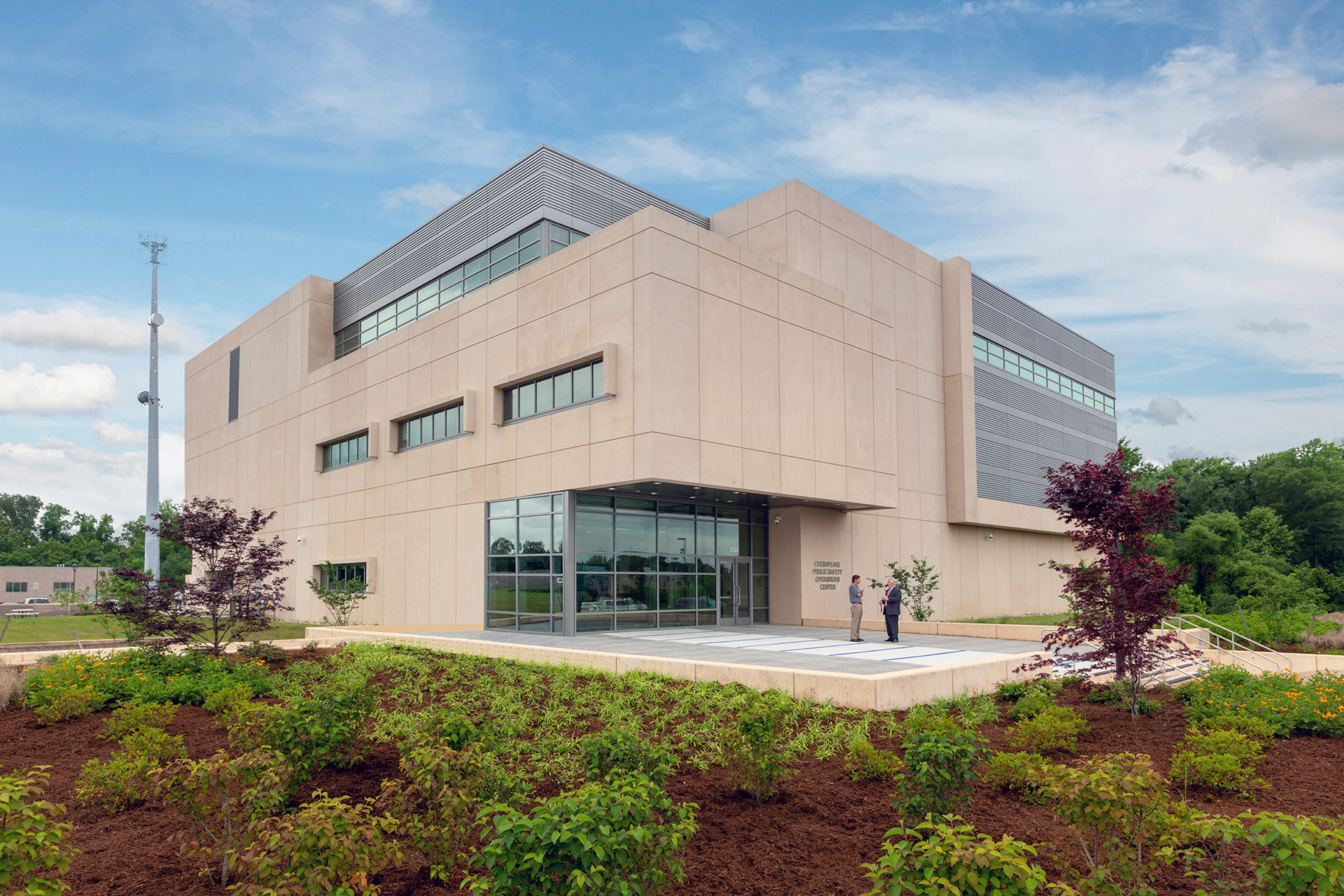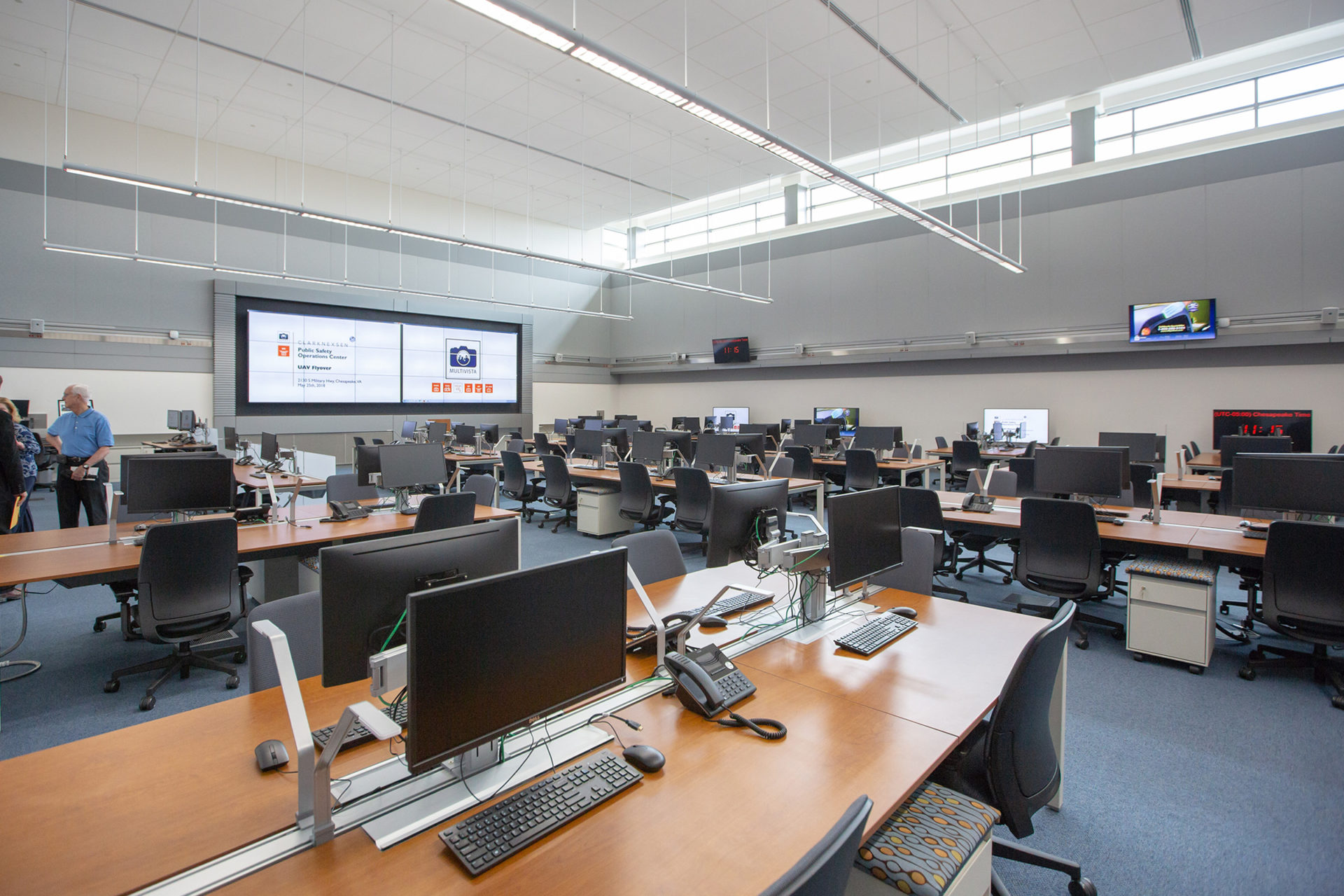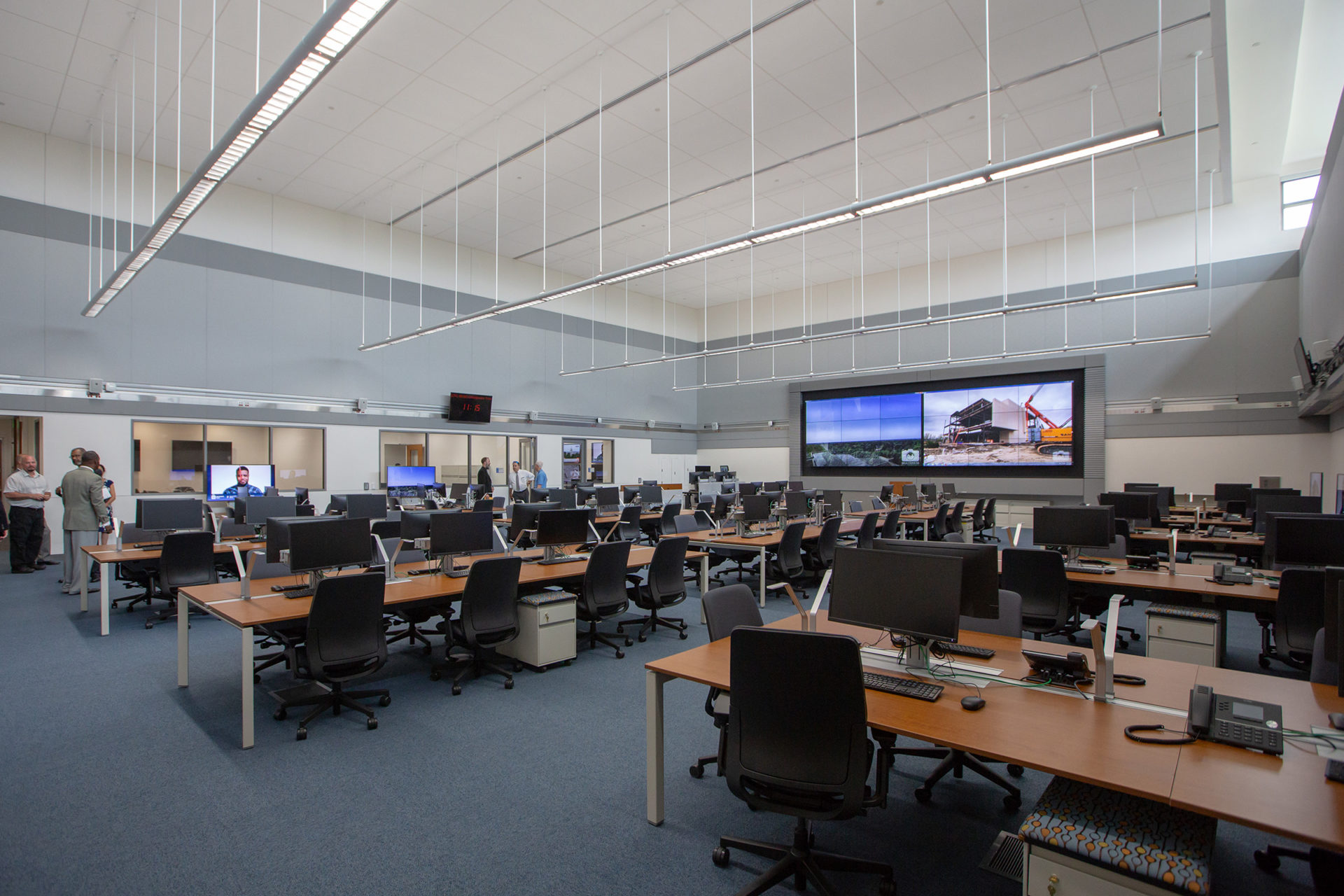The Chesapeake Public Safety Operations Center for the City of Chesapeake ushers in a new era for their emergency responders, providing the emergency management team and police with a state-of-the-art facility that streamlines and consolidates multiple departments. Designed by Clark Nexsen and HOK, this 51,150 square foot facility fully integrates the emergency dispatch center, emergency operations center, customer call center, backup network operations center, fire department training spaces, and associated ancillary spaces.
The design process emphasized programming for adjacencies that would allow each department to function optimally. Fundamentally, this centered on creating breakout team areas for every aspect of emergency activation and locating them adjacent to the large Emergency Operations Center, which accommodates up to 100 people. Additional spaces include emergency management meeting rooms, community meeting spaces, internal staff training rooms, and private offices. A full commercial kitchen equips the building to meet the needs of the emergency activation team, who are there for multiple days of 24 hour operation during an activation.
The facility is designed to be both sustainable and resilient. Extensive redundancy preserves operability in case of an unforeseen event, including redundant mechanical systems, a backup network operations center, and dual emergency generators. In a weather event such as a hurricane, the facility can withstand up to 130mph winds. Resilience and security overlap in additional considerations such as facility hardening, bomb blast mitigation, parking with separate entrances for employees and visitors, communications and radio tower placement, and security access points.
Sited next to the City of Chesapeake’s animal services building, the precast concrete facility is intended to align with the existing architectural context while providing the security necessary for emergency operations. Its location on a capped construction landfill necessitated extra measures to ensure the appropriate venting of any potential methane or radon away from the building. Overcoming this design challenge involved the full range of Clark Nexsen’s expertise, with architects, interior designers, landscape architects, and all of our engineering disciplines (civil, electrical, fire protection, mechanical, plumbing, and structural) collaborating on the solution.



